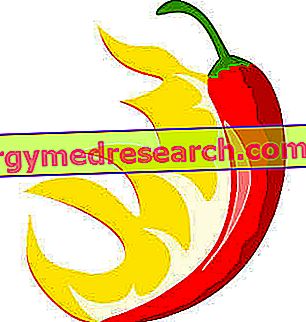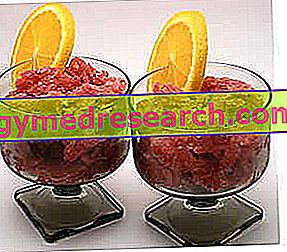Esophagitis
Esophagitis is an inflammatory lesion that affects the tissues of the esophagus.
Belonging to the digestive tract, the esophagus is the conduit that (thanks to a peristaltic action) transports food from the mouth to the stomach.

The causes for which it arises are attributable to gastroesophageal reflux disease (GERD), infections, autoimmunity, use of certain oral medications and some allergies.
Treatment for esophagitis depends on the cause and on the severity of the tissue damage. Most often a diet against gastroesophageal reflux is needed.
If left untreated, esophagitis can damage the mucosa, interfere with normal esophageal function and induce various complications (scarring, stenosis and difficulty swallowing).
Esophagitis and GERD
Normally, the acidic contents of the stomach are isolated from the esophagus thanks to a valvular structure called the lower esophageal sphincter.
If this valve does not close properly or opens out of time, the contents of the stomach may rise up into the esophagus causing gastroesophageal reflux.
When acid reflux becomes frequent or continuous, the condition is called gastroesophageal reflux disease (GERD).
The main complications related to this pathology are chronic inflammation and tissue damage. It should be remembered that GERD is related to the onset of Barrett's esophagus, which in turn predisposes the tumor of the esophagus.
Reflux Esophagitis
For the prevention and treatment of reflux oesophagitis, the most important factor is undoubtedly the dietary and behavioral factor.
They are risk factors for reflux esophagitis:
- Hiatal hernia: sometimes congenital or independent from the diet, but sometimes caused by incorrect nutritional habits
- Night food: typical of evening / night workers; for example catering technicians
- Any meal taken before bedtime (even lunch followed by afternoon sleep)
- Portions and meals too abundant
- Poor digestible meals
- Harmful nutritional molecules
- Foods that are too cold or too hot
- smoking
- Tight clothing in the abdomen, especially at mealtimes
- Stomach acidity
- Stress.
How to Organize the Diet
Meal fragmentation and portion reduction
The portions and meals of those suffering from reflux oesophagitis must be moderate.
To avoid distorting energy intake, this dietary correction is based on:
- Increase in the number of courses at each meal
- Increased number of meals, giving more importance to secondary ones.
The table shows an example of switching the normal diet to that for esophagitis. The energy supply has remained unchanged, the nutritional quality has increased, and the meals and courses have been split
| PREVIOUS DIET | DIFLOW FOR REFLUX EXOFAGITE |
| Breakfast: 350ml whole milk, coffee, 6 biscuits with hazelnut spread | Breakfast: 200ml soy milk, 30g corn flakes, |
| Snack I: 1 apple, 1 low-fat yogurt and 6 biscuits | |
| Lunch: 150g pasta all'amatriciana | Lunch: 200g tuna fillet, 200g grilled vegetables |
| Snack II: 1 pear, 1 low-fat yogurt and 6 biscuits | |
| Dinner: 400g rib eye steak, 200g grilled vegetables, 4 slices of bread and 2 glasses of red wine | Snack III: 4 slices of bread with 8 slices of dried beef |
| Dinner: 80g tomato pasta, 50g lettuce and 100g chicken breast |
Improve Digestibility
The reflux esophagitis diet requires an increase in overall digestibility; in this regard, it is necessary to make the following changes:
- Reduce portions and total volume of meals (see above)
- Choose more digestible foods, keeping the same food group. For example:
- Replace whole milk with partially skimmed or skimmed milk (vegetable only if reinforced with calcium and riboflavin).
- Replace the croissants with lean bread and jam.
- Replace fatty pork meat (like ribs) with chicken breast.
- Replace the omelette with the boiled eggs.
- Replace fatty cheeses (such as gorgonzola) with light milk flakes or lean ricotta.
- Replace vegetables with little digestible peel (peppers, tomatoes, aubergines, etc.) with the same peeled or with others easier to digest (zucchini, chicory, fennel, etc.).
- Reduce total fat to 25% of total calories. If in excess, the lipids increase the time spent in the stomach. To obtain this dietary result, it is sufficient to use only lean foods and season each recipe with 5g of extra virgin olive oil.
- Make a fiber share that is around 30g / day. These, if in excess, hinder gastric emptying. If the intake of fruit and vegetables is normal, it is better not to overdo the whole foods and the legumes still in their skins.
- Replace animal fats with extra virgin olive oil. Not everyone knows that this product, in normal portions, is able to improve digestion because it favors the emulsion of other lipids.
- Use cooking methods with low fat, effective enough to allow protein denaturation, but not excessive.
Proteins are nutrients that require gastric digestion (carbohydrates and fats do not need them). Cooking is a physical process that allows to denature proteins and increase their digestibility. This advantage does NOT occur if the heat treatment is insufficient or excessive.
The most suitable systems are: boiling, steaming, pressing, bain-marie, vacuum and jar.
NB. Grinding is also a physical treatment that increases the digestibility of protein foods.
- Place the most protein meal for lunch, while the richest carbohydrate (therefore more digestible) at dinner.
Other Foods to Avoid
In addition to those mentioned in the previous chapter, there is a range of foods that worsens the state of reflux oesophagitis:
- Ethyl alcohol: alcoholic beverages increase gastric acidity and promote reflux, which is why they must be abolished.
- Coffee, Tea, Cocoa: due to the presence of caffeine, theophylline and theobromine, although less evident than alcohol, they increase acidity and gastric contraction.
- Energy Drink: for the same reasons as coffee, tea and cocoa.
- Carbonated drinks: they create an increase in pressure in the stomach and tend to accentuate the rise of gastric contents in the esophagus.
- Spicy spices: it is the case of chilli, pepper, horseradish, onion, garlic and ginger. They irritate both the mucosa of the stomach (increasing acidity) and that of the esophagus. Generally, it is recommended to reduce the spices (including the mixed ones).
- Mint: gastroesophageal reflux has a favorable effect.
- Other foods: although a logical explanation is not found, it seems that certain foods worsen reflux and esophagitis. Among these we recognize acidulous foods such as tomatoes (especially those preserved) and citrus fruits. In theory, the gastric mucosa should tolerate much lower pH (gastric acid is about 1-2, while tomato juice barely reaches 3.9); nevertheless, most subjects suffering from reflux oesophagitis experience a worsening of symptoms with each use.



